The following table is a summary of the production changes in Abercrombie & Fitch Seafarer chronographs, from the introduction of this model in the early 1950's through the last model, produced over 20 years later. This table highlights the changes made in the Seafarers, on a feature-by-feature basis, in order to provide a history of this chronograph.
To understand the information in this table, the reader should begin with the information for the first model (A1. Prototype / Early Model), which describes the key features of the model (movement, design, construction, movement, etc.), and move down the table to later models. Where any key feature has been changed in a model, the entries (bullet items) for that model describe the change. Where a feature is unchanged from one model to the next, there is no entry describing that feature for the second model.
By way of example, the Valjoux 72 movement was introduced with the 2443 style case (entry B1 in the table). That change is noted for that model, but is not repeated for any subsequent models. This indciates that all later models continued to use the Valjoux 72 movement. In another example, the table indicates that the model 2444 style case (entry C1 in the table) used smaller pushers than previous models; that the model 2447 style case (entry D1 in the table) went back to the larger pushers; and that all subsequent models had larger pushers.
For additional photographs of each of the models shown below, see the Abercrombie & FItch Seafarer -- Main Page or click on any of the photographs shown below.
For additional information on how these chronographs functioned, see the Instruction Booklet for the earlier model, or the Instruction Sheet for a later model.
Jeffrey M. Stein
March 6, 2005
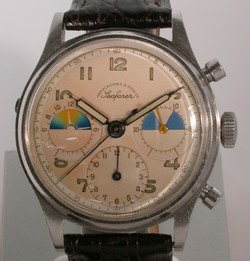
A1. Prototype / Early Model
- minute recorder rotated 90 degrees
- yellow needle on minute recorder
- tide dial visible through 180 degree cut-out
- pusher for tide dial is recessed
- Valjoux 71 movement
- screw-back case (hex) measures 37.8 mm across the front; 44.8 mm lug-to-lug; 20 mm between lugs; 10.4 mm thick (back of case to top of bezel, not including crystal)
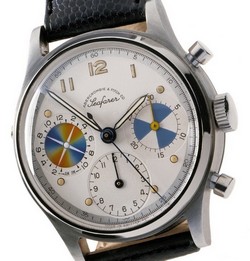
A2. Reference 2447SF
- numerals 11-12-1 on the dial
- minute recorder in usual position
- tide dial visible through full cut-out (360 degrees)
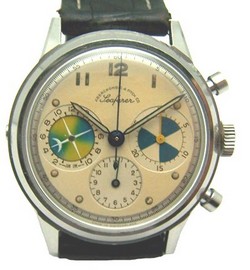
B1. 2443-Style Case
- hour recorder smaller and higher than previous versions
- Valjoux 72 movement
- screw-back case (hex) measures 37.9 mm across the front; 43.2 mm lug-to-lug; 20 mm between lugs; 9.8 mm thick (back of case to top of bezel, not including crystal)
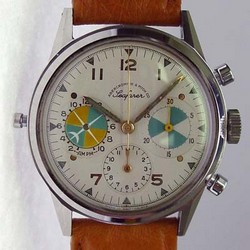
B2. 2443-Style Case
- numerals 11-12-1-5-7 on dial
- pusher for tide dial fully extended
- numerals for minutes (5-10-15-20) replaced by triangular markers
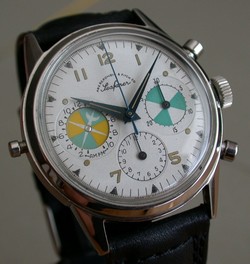
B3. 2443-Style Case
- dauphine hands (replacement; not original)
- black needle on minute recorder
- screw-back case (hex) measures 37.9 mm across the front; 44.8 mm lug-to-lug; 21 mm between lugs; 10 mm thick (back of case to top of bezel, not including crystal)
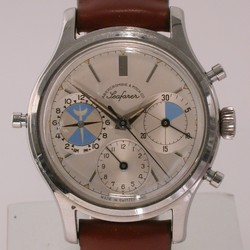
C2. 2444-Style Case
- applied steel markers replace painted numerals
- hour recorder larger than previous version
- smaller pushers than previous models
- screw-back case (slotted) measures 36.0 mm across the front; 44.3 mm lug-to-lug; 18 mm between lugs; 9.0 mm thick (back of case to top of bezel, not including crystal)
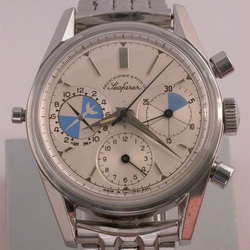
D1. 2447 (Carrera) Style Case
- larger pushers return
- screw-back case (slotted) measures 35.8 mm across the front; 44.7 mm lug-to-lug; 18 mm between lugs; 10.0 mm thick (back of case to top of bezel, not including crystal)
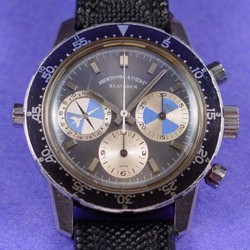
E2. 2446C (Autavia) Style Case / Early Version
- polished steel hands, with luminous inserts
- fluted pushers
- snap-back (compressor) case measures 39.7 mm across the front; 47.8 mm lug-to-lug; 20 mm between lugs; 11.2 mm thick (back of case to top of bezel, not including crystal)
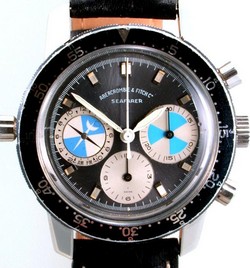
E3. 2446C (Autavia) Style / Later Version
- painted white hands
- tide dial
Additional Notes --
Special Thanks to Everyone who helped produce this table, including: